You may not know this about Ethiopian coffee.

Ethiopia is known as "the birthplace of coffee". There is such a custom in Ethiopia. No matter how poor the people are, their homes must have a coffee pot and a charcoal stove. Why? Because coffee is something that local people think they have to do every day, because they think fertilizer is expensive, so they never use fertilizer. Then, after the coffee is brewed, it is divided into three courses. The first course of coffee is to be drunk by the male elderly, because after the first course of coffee is brewed, it is relatively strong, and then it is to be drunk by the male elderly mainly with respect. And the second is for the women, for the women who are guests, to drink. The third course was the mildest course, which was to be given to the children who were guests. Therefore, it is divided into three processes, and its coffee is also very unique locally.
Ethiopia Coffee Production Area
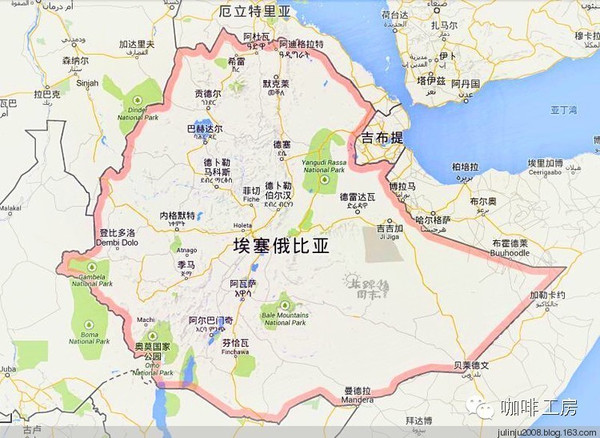
Harar
Hara is located in the Eastern Highlands of Ethiopia.(Haredge Province) and grows between 5,000 - 7,000 feet above sea level. It was still wild on hillsides a century ago. Most of the raw beans are medium in size and pointed at both ends. The color is green with yellow or gold. When baked, it has a strong chocolate smell. The taste is wild with moderate acidity and rich texture. It is very typical of mocha flavor. Mattari, which is close to the Bani Matar district of Yemen, is even better.
Today's Hara is still processed by traditional solarization, usually exported from the nearby town of Dir Dawa, with an annual yield of about 185000bags/60Kg, of which the most common export is Longberry (evolved from the early Arabica tree species) and the size of G5(Grade5) or G4. Unfortunately, good Hara is often smuggled to Yamen, where it is sold as a higher-priced mocha bean.
In addition to serving as a single item, its rich taste and acidity can also serve as a base for espresso.

Djimmah
This gemma, which accounts for about 50% of Ethiopia's annual production, is located in the country's southwestern highlands (at the border of Kaffa and Illubabor provinces) and grows between 4,400 and 6,000 feet above sea level, usually exported as G5/G4.
However, in recent years, about 10%~20% of Gima has been used to make up for the lack of taste of coffee, and its quality has gradually declined to its own level. However, people who buy coffee have a bipolar evaluation.(My friend uses only Gima as the base of espresso in his shop, and its strong flavor surprises me.) The coffee is like a sea blow, following the ancient method of taking the sun, but also a little sour wine but slightly inferior to the sea blow. Its texture is medium, rough and earthy.

Ghimbi Lekempti
West Ethiopia, 4,900 - 5,900 feet above sea level.(Wollega Province) plateau, north of Jima, most of them wild, annual production of about 500000bags/60kg, export mostly G5/G4, beans are larger and longer than Longberry, green with brown, taste similar to less jasmine tea fragrance, more bitter, lack of rising hala, slightly acidic, slightly fruity and wine fragrance but slightly inferior to hala, but there is a good texture viscosity, so the beans in Jinbi District are nicknamed "poorman' sHarar."
Complex but balanced taste, good throat finish when deep-cooked, long sweet back, is one of the ingredients many bakers like as a mixed bean, but also as a good single item, suitable for drinking after dinner.

Limu
Grown in the south-west highlands of Ethiopia East of Gima, north of Sidmo, elevation 3600-6200 ft. Preferred by most Europeans and Americans, mostly washed, annual yield of about 110000bags/60kg, medium mostly round (15/16scr), color green with blue, exports mostly G2 grade, taste similar to Yegashev, viscosity is thinner, but floral and fruit flavor is obvious, sour is also softer than Yegashev, more irritating acid, residual taste similar to wine, has a good and balanced quality, is after Yegashev, a noteworthy Ethiopian fine coffee, but almost all the rum is Ethiopian coffee organization vertical integration exports, That's why it's almost impossible to see them in the country.
The best flavor is two to three days after baking. In fact, the good Lime and Yegashev are equal (this is actually a subjective consciousness of different opinions).
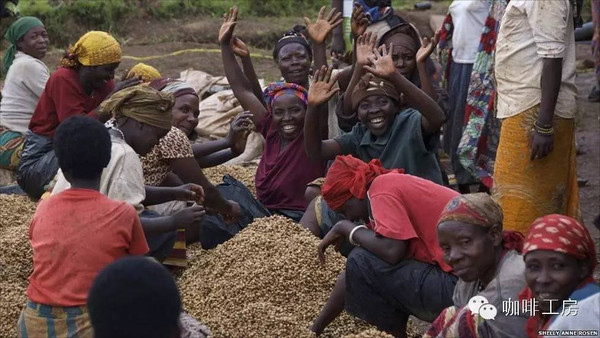
Sidamo
Growing in the southernmost Ethiopian plateau between 4,600 - 7,200 feet above sea level (Sidamo Province), southeast of Jima, due south of the capital, it is usually sweeter and more popular than most people. Its annual yield is about 225000bags/60kg. The beans are smaller than Longberry and greenish and grayish. In the sun drying field of Sidamo, coffee is placed in hemp net rack. Workers take turns to stir coffee in the sun. Sun-dried Sidamo is usually labeled as G4 export. Most of the washed Sidamo are exported as G 2 grade because of the perfection of the treatment process.
Sunlight tastes close to floral, but slightly earthy. A nutty fruity, slightly cacao nose when washed, but smooth texture and viscosity, pleasant acidity and aromas. Medium roast is good for single serve, deep roast for blend coffee and base of good Espresso.

Yirga-Cheffe
Yirga is the name of a town in Sidama, meaning stable, and Cheffee means municipality.
It grows in the southern Ethiopian plateau at an altitude of 5700-7800 feet, located in the northwest of Sidamo Province, near Abaya Lake. It is usually sweet and popular with most people. It produces about 225000bags/60kg per year. The bean is smaller than Longberry, and the color is green and gray. Most of them are washed. In the washing plant, coffee fruit after harvest, fermentation in a tank filled with water, workers use a simple wooden rake stirring, in order to facilitate the smooth cleaning, washing plant always has a pungent fruit acid fermentation smell, and the sound of fruit collision with each other in the tank, fruit thick soft, directly shelled and washed, leaving only sheepskin coated fruit, fruit after the final washing, directly dried outside the washing plant.
Taste similar to lemon and citrus complex, taste excellent viscosity, complex flavor (personally think sometimes because of its loud name and people have been over-emphasized and exaggerated suspicion, even though I like its flavor), mostly exported as G2, suitable for medium baking as a single product.
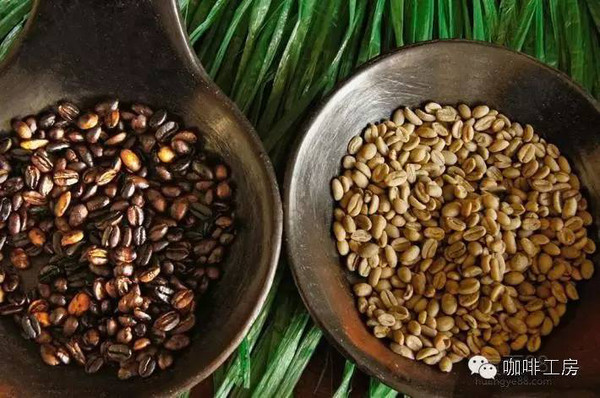
Also mentioned are Teppi and Bebeka, which are mostly produced by state institutions, but in small numbers and less well known to the world, and are only lightly described here;Teppi grows at altitudes of 3,600 - 6,200 feet and produces about 50000bags/60kg per year;Bebeka grows at altitudes of 3,000 - 3,900 feet and produces about 30000bags/60kg per year.
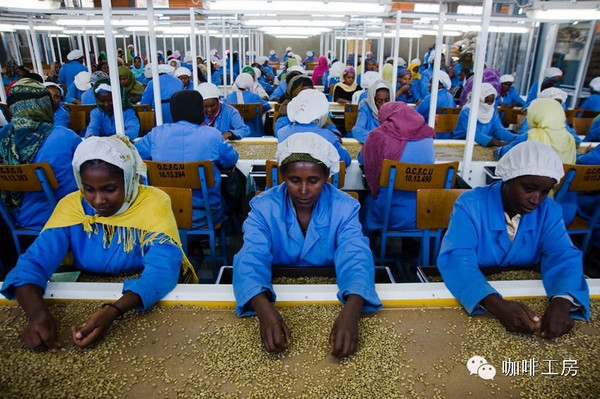
Important Notice :
前街咖啡 FrontStreet Coffee has moved to new addredd:
FrontStreet Coffee Address: 315,Donghua East Road,GuangZhou
Tel:020 38364473
- Prev
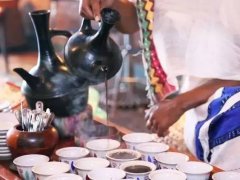
Coffee ceremony and Coffee Culture in Ethiopia
All Ethiopians are proud of their coffee. Yes, coffee is both a belief and a culture for them in Ethiopia. You can refuse to attend the wedding, but you must not refuse to attend the coffee ceremony, and being invited to the coffee ceremony is recognized and accepted by the local people. Ethiopia is a country with changeable landforms and various nationalities.
- Next

Flavor description of Coffee beans with the characteristics of the Lion King in Sidamo A brief introduction to the varieties of taste treatment
Sidamo Lion King characteristic flavor description of coffee beans taste treatment varieties introduce sun-cured coffee accounts for 65% of exports. Mainly picked by families, red coffee beans are placed on cement floors or on high tables to dry to about 11.5% humidity, then peeled and cleaned. Before the decline, coffee exports accounted for more than half of Ethiopia's foreign exchange earnings, but now they account for only about 35%.
Related
- Detailed explanation of Jadeite planting Land in Panamanian Jadeite Manor introduction to the grading system of Jadeite competitive bidding, Red bid, Green bid and Rose Summer
- Story of Coffee planting in Brenka region of Costa Rica Stonehenge Manor anaerobic heavy honey treatment of flavor mouth
- What's on the barrel of Blue Mountain Coffee beans?
- Can American coffee also pull flowers? How to use hot American style to pull out a good-looking pattern?
- Can you make a cold extract with coffee beans? What is the right proportion for cold-extracted coffee formula?
- Indonesian PWN Gold Mandrine Coffee Origin Features Flavor How to Chong? Mandolin coffee is American.
- A brief introduction to the flavor characteristics of Brazilian yellow bourbon coffee beans
- What is the effect of different water quality on the flavor of cold-extracted coffee? What kind of water is best for brewing coffee?
- Why do you think of Rose Summer whenever you mention Panamanian coffee?
- Introduction to the characteristics of authentic blue mountain coffee bean producing areas? What is the CIB Coffee Authority in Jamaica?

